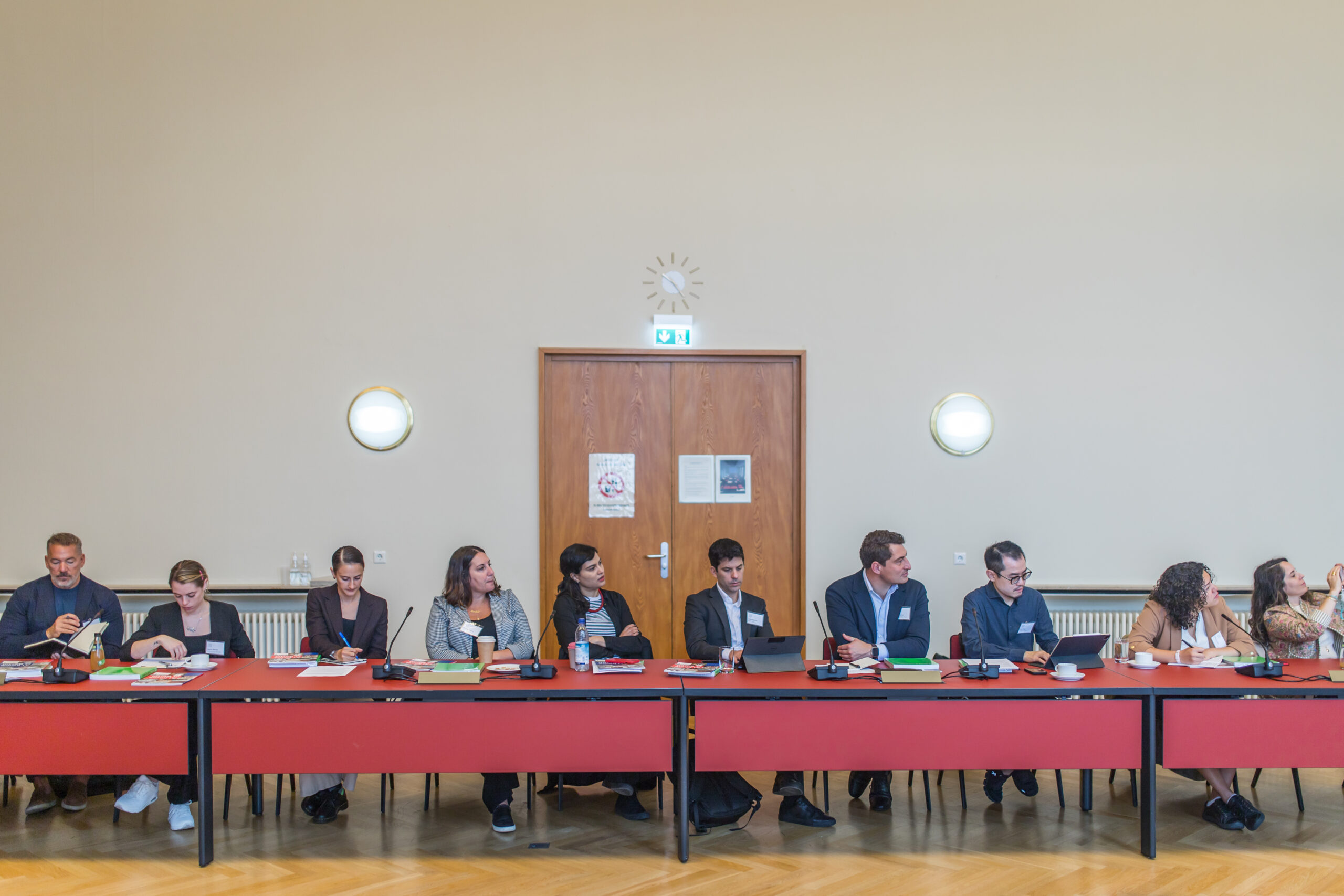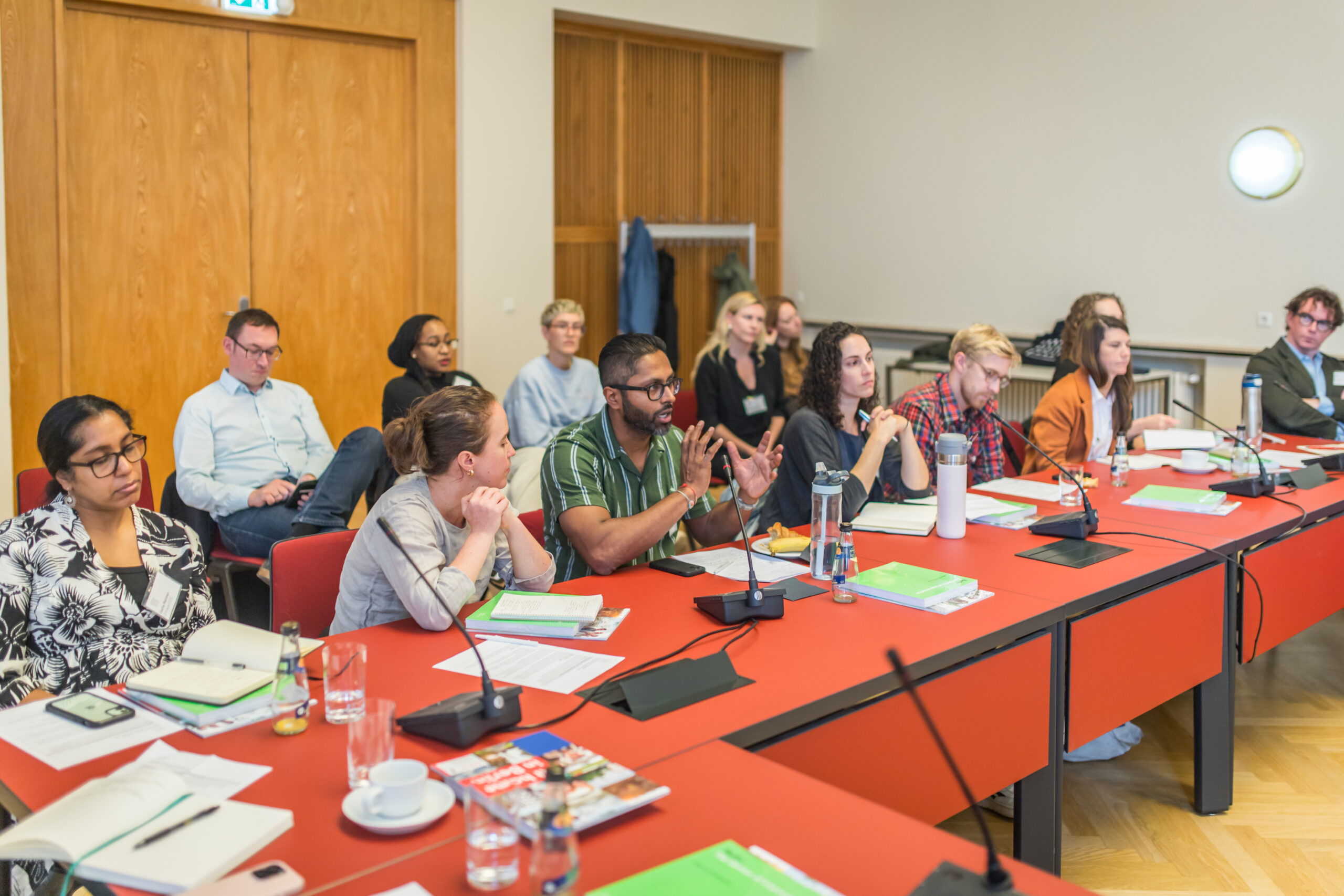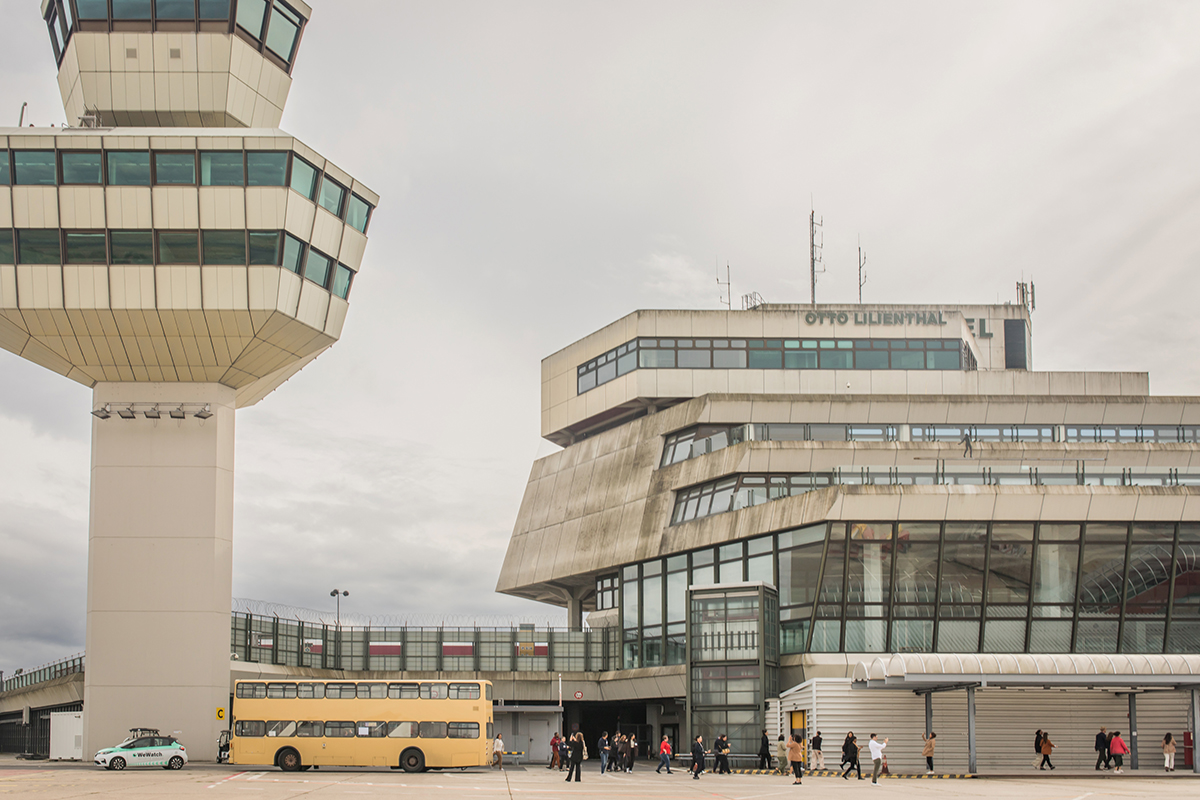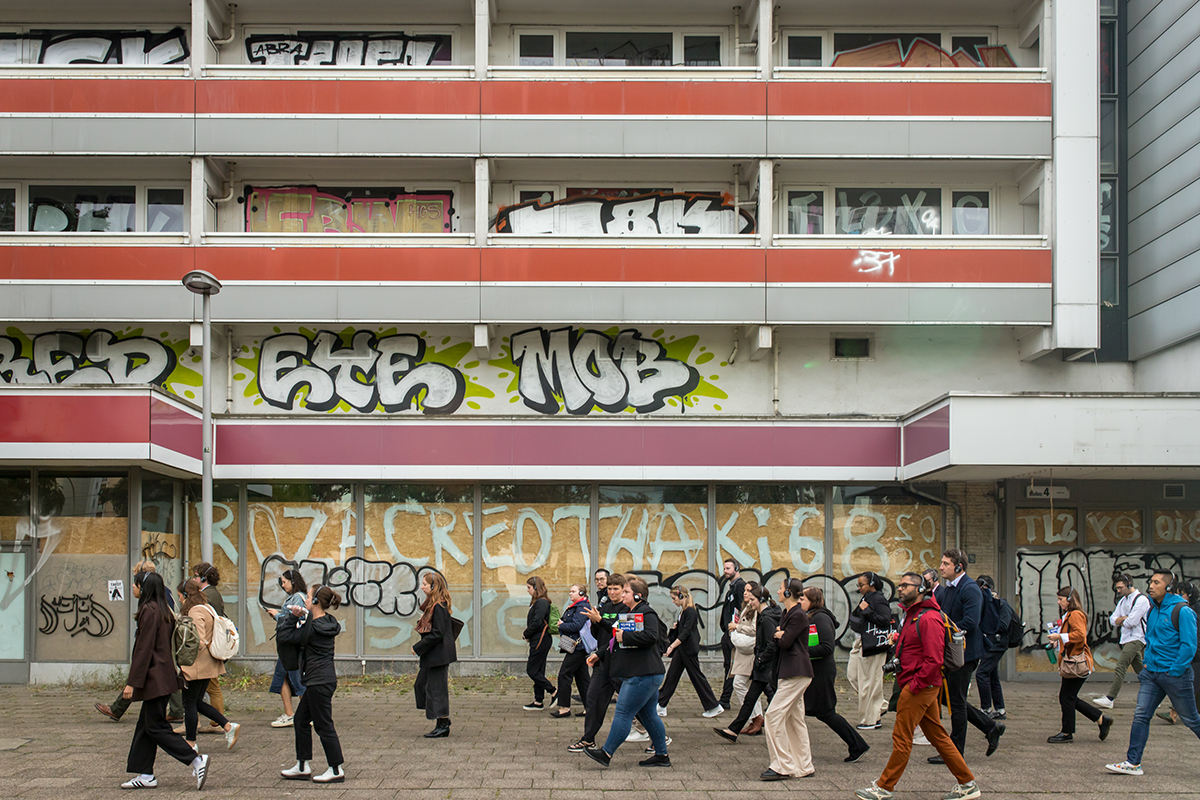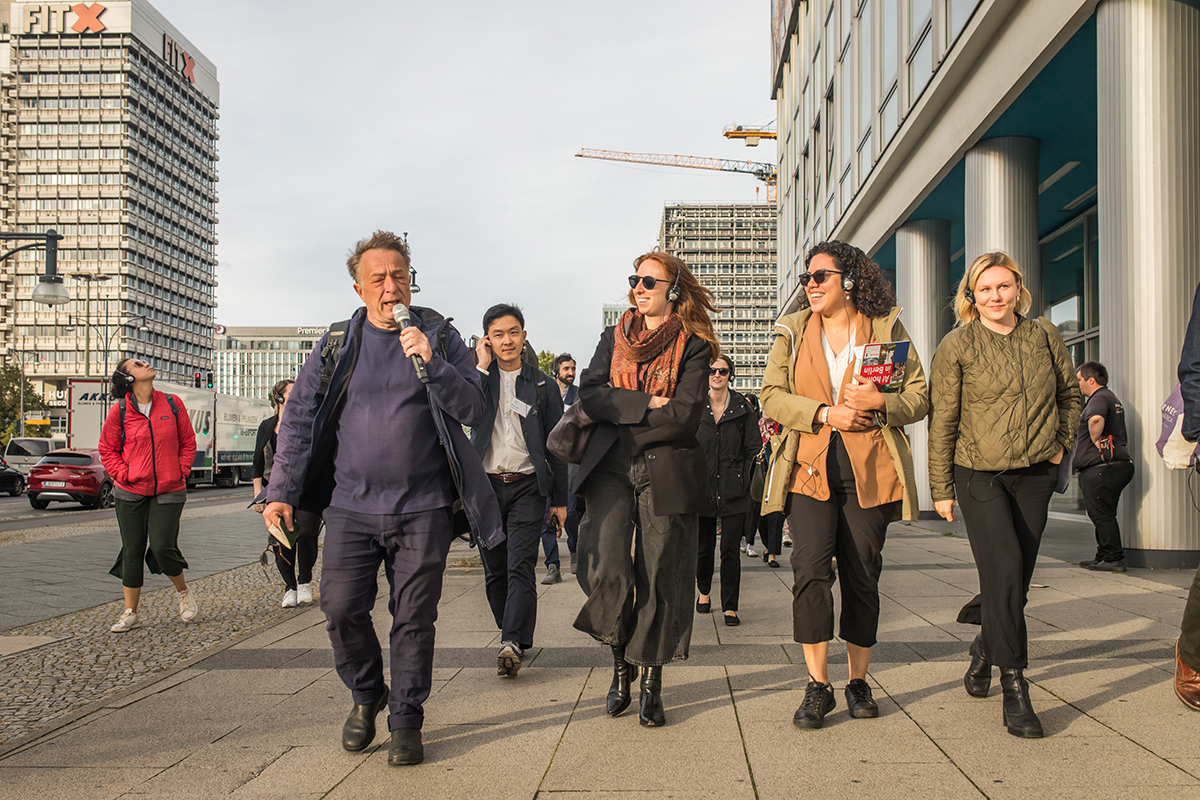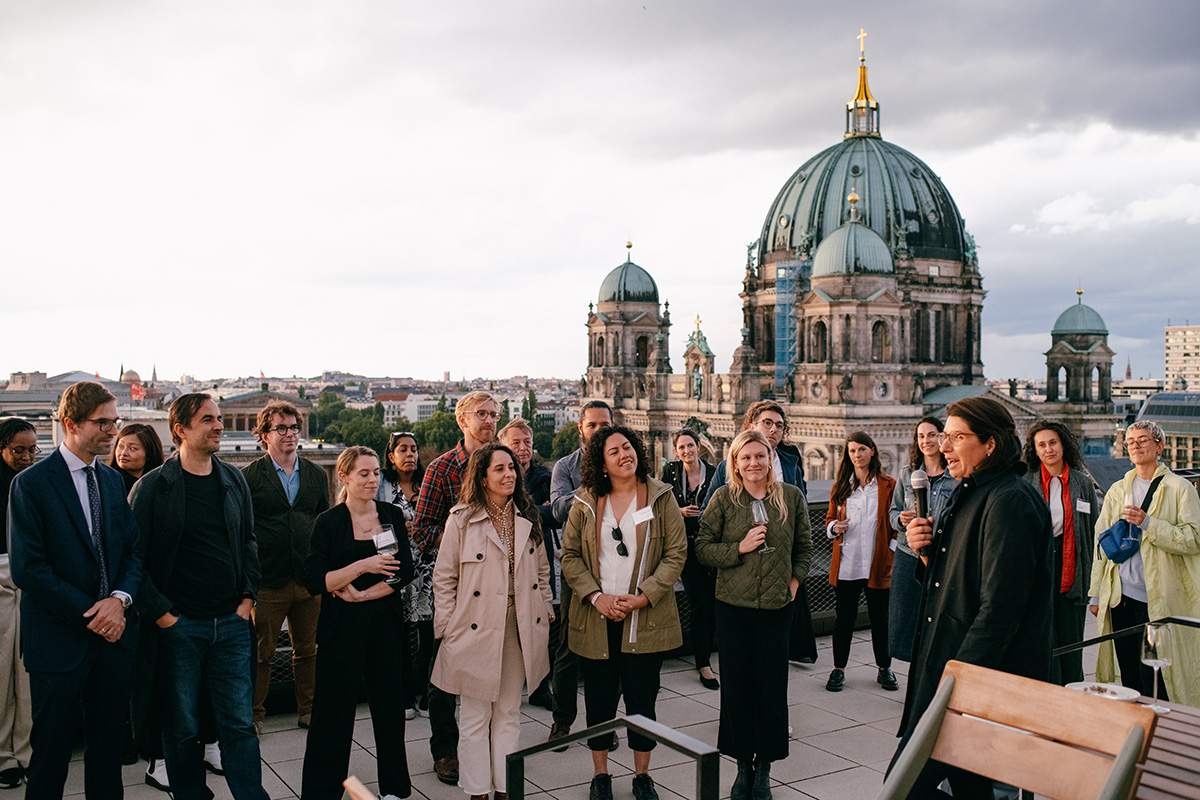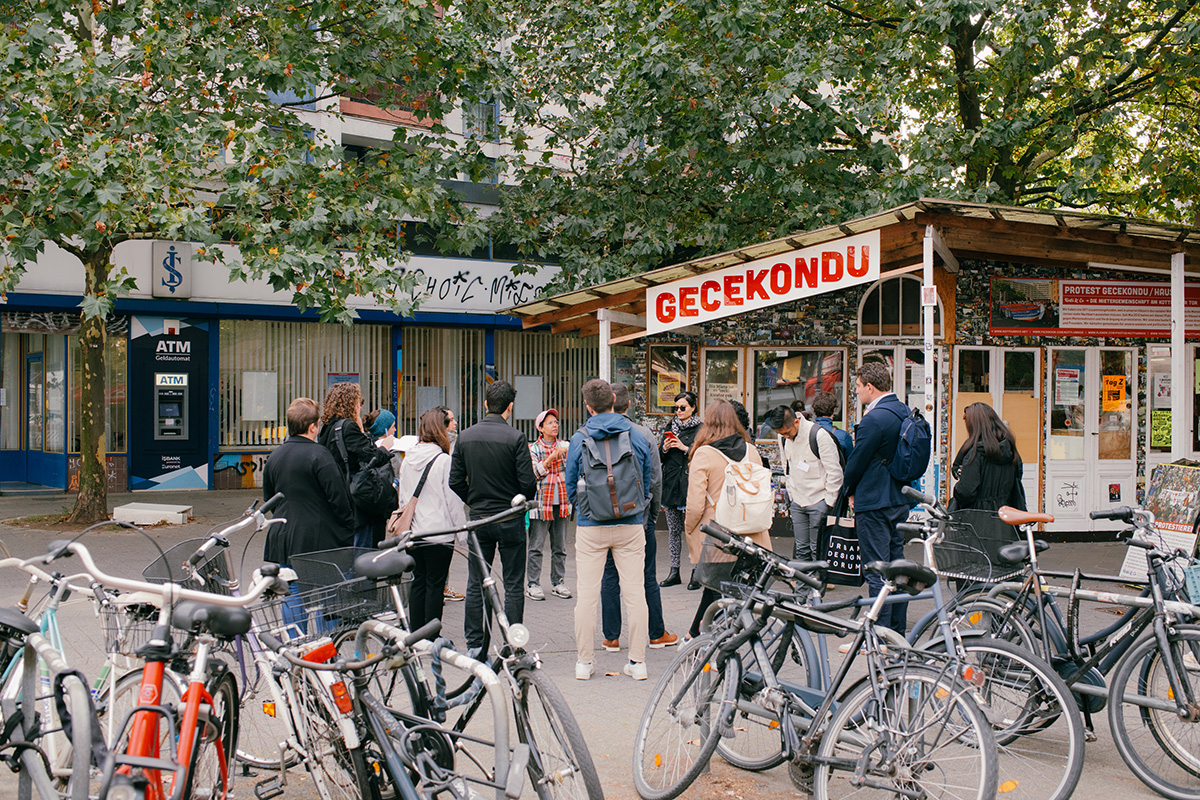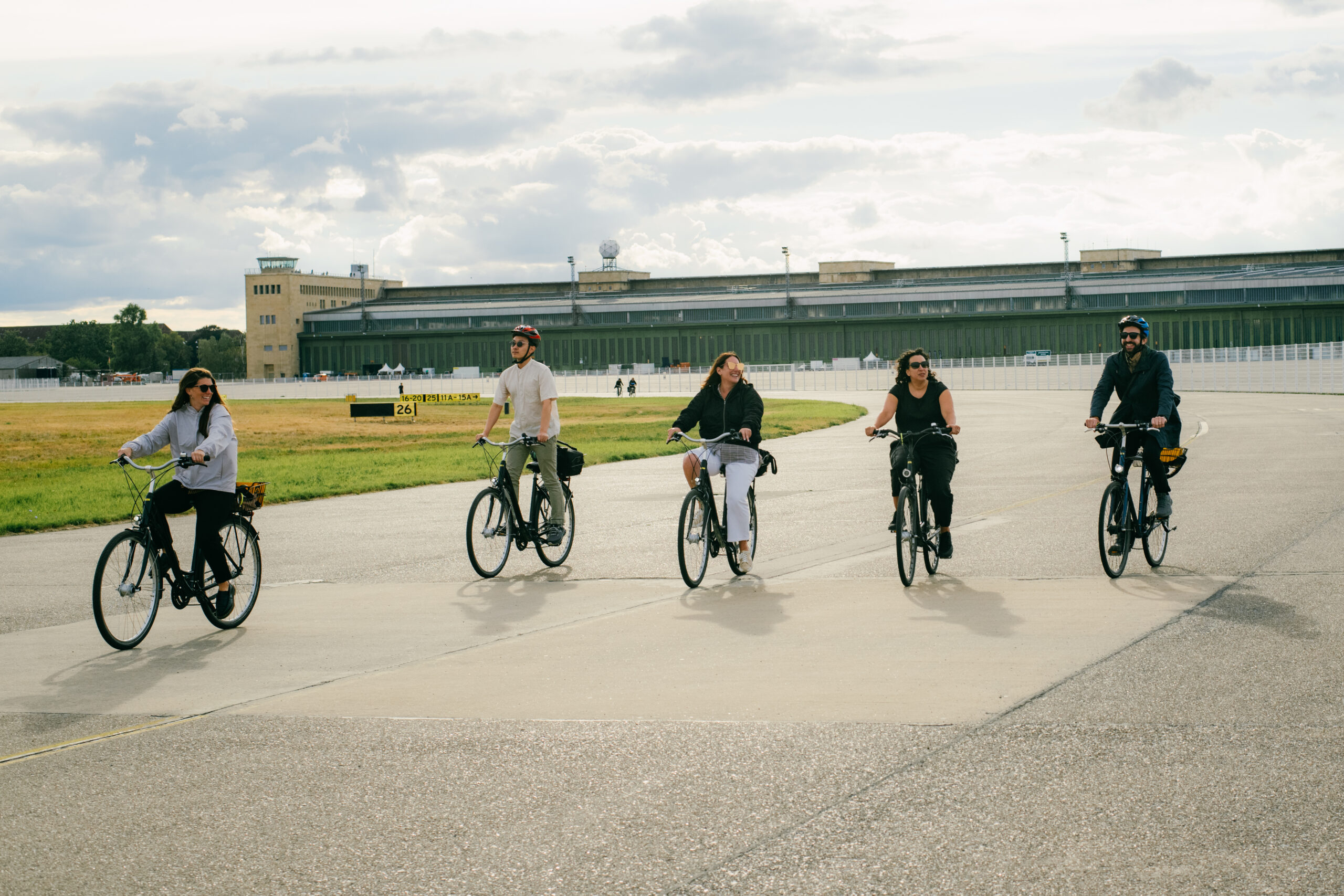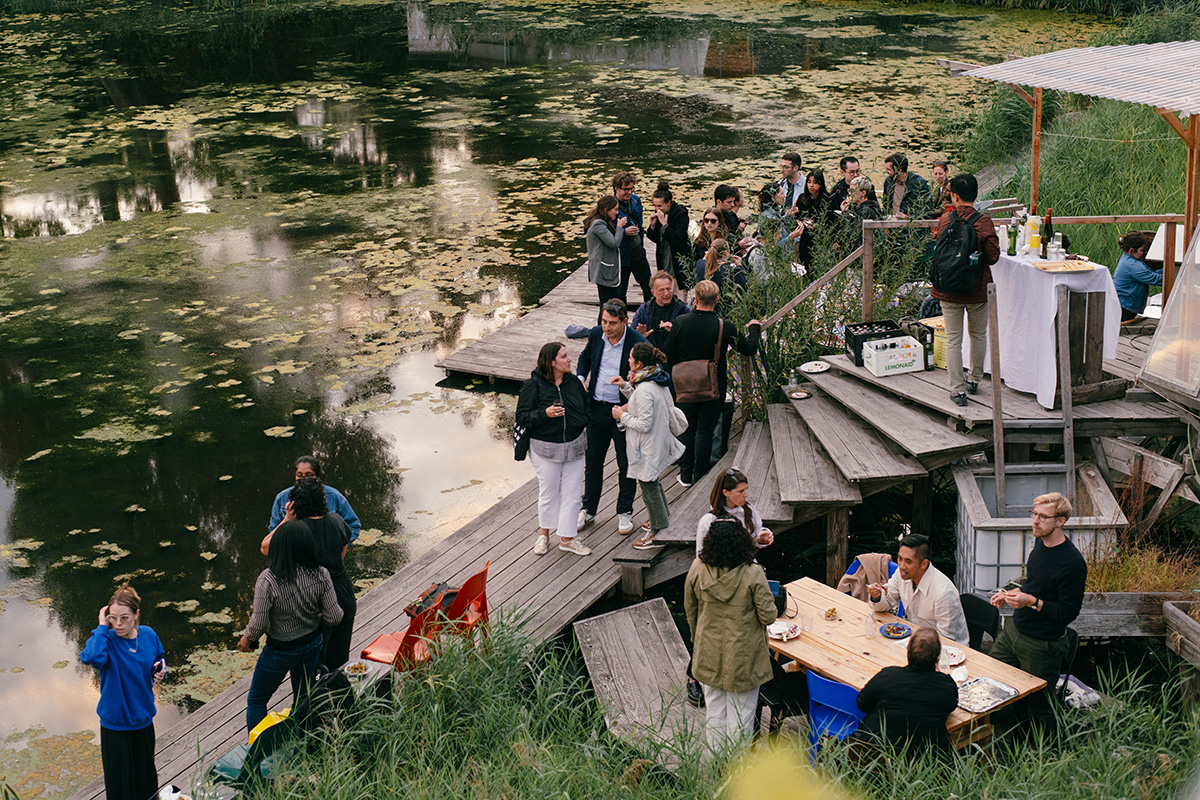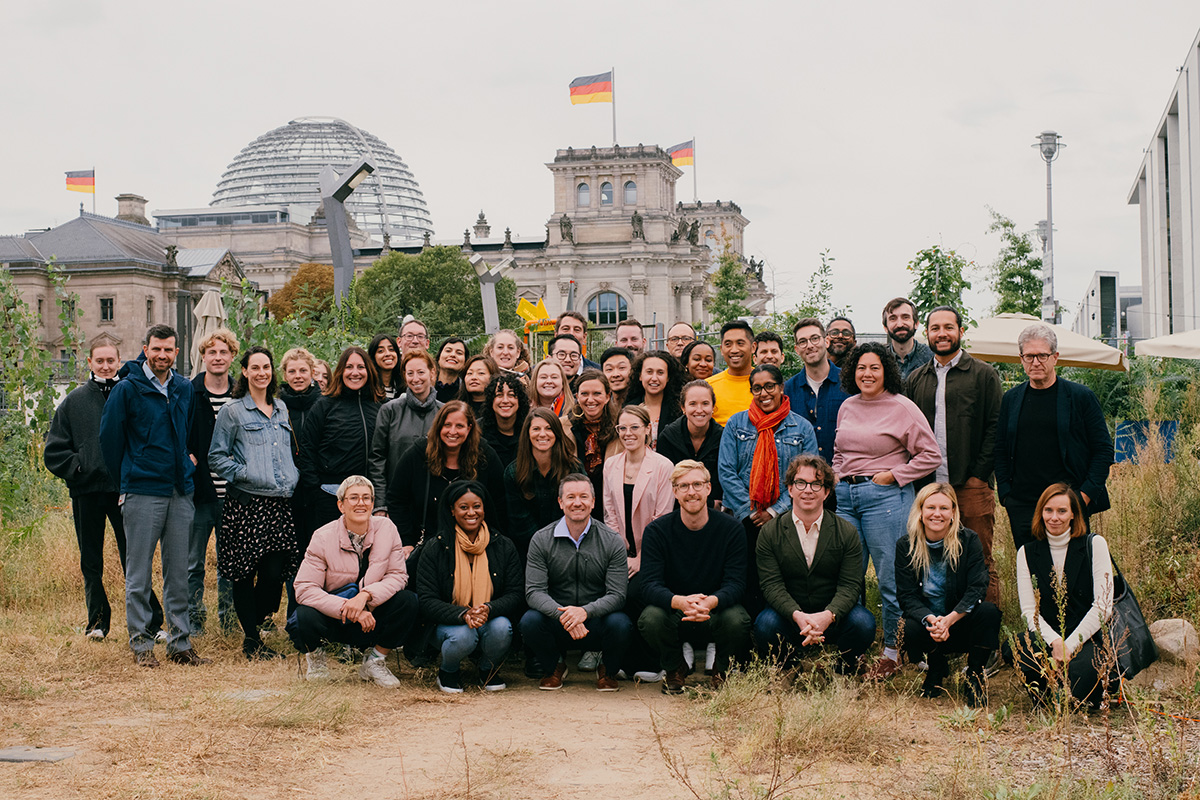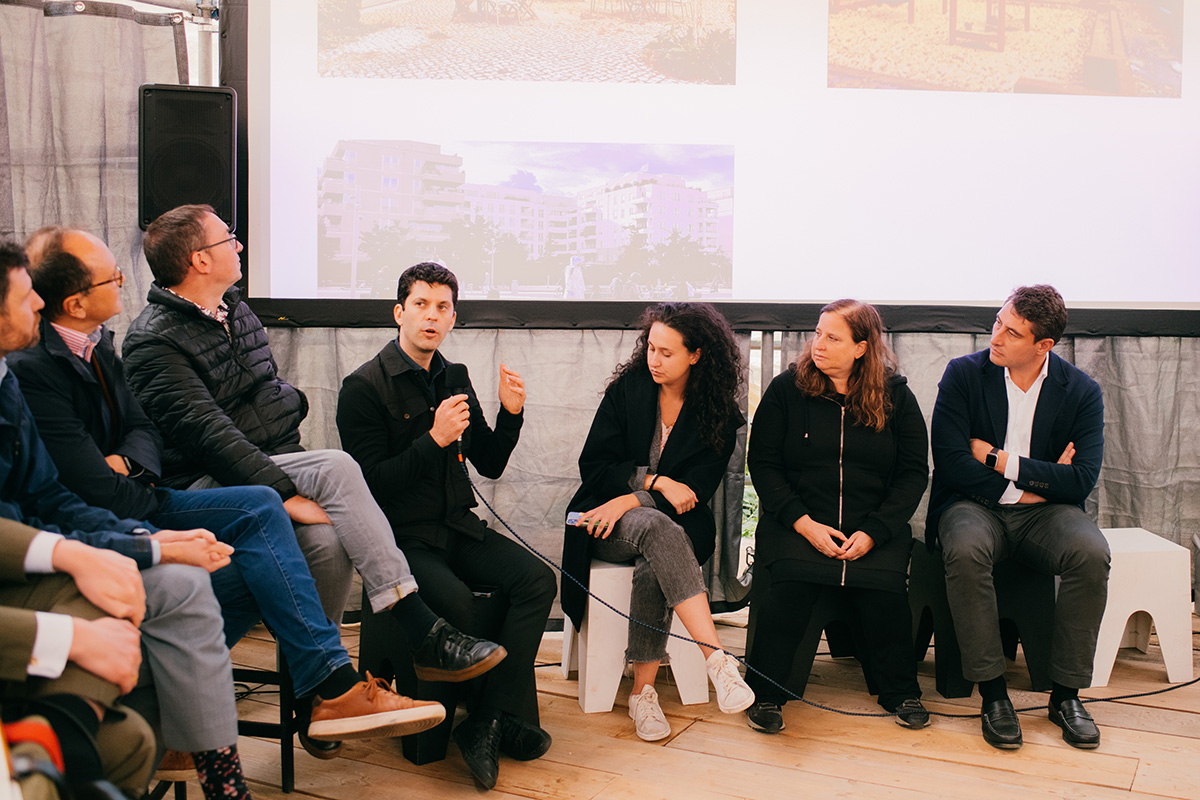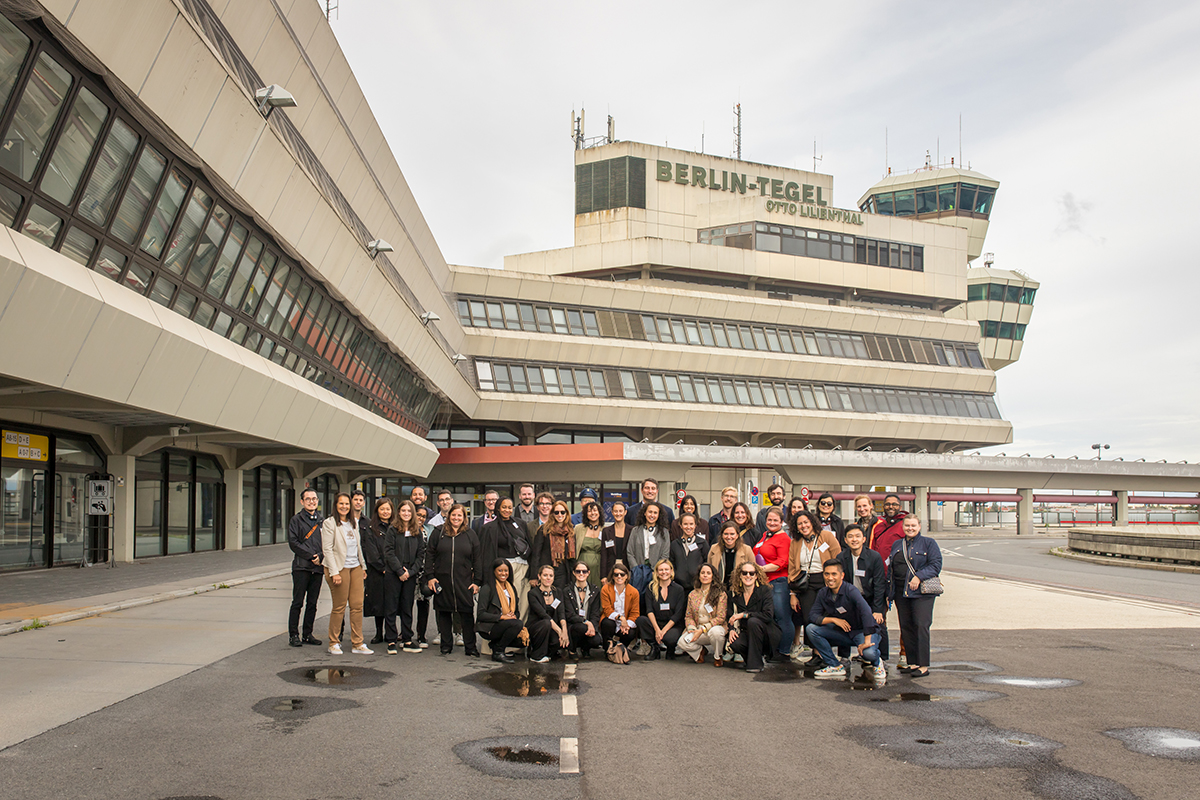
In this Practice Note, you’ll hear from our Global Exchange staff about what we’re learning as we build solidarity between leaders in New York City and other cities taking “big swings” at their housing crises. An immersive, 3-day study trip in September connected Global Fellows with leaders, key case studies, projects and policy shifts in Berlin.
By Stacey Anderson and Clara Parker
The arc of the study trip offered both a top-down and bottom-up perspective to addressing Berlin’s housing crisis. We started the morning with a visit to the Berlin Senate, where Senator Christian Gaebler and members of the Department for Urban Development and Housing presented on Berlin’s “opportunity zones,” housing and rental policy and civic participation efforts around the controversial Tempelhofer Feld.
From the senate, a vintage yellow tour bus brought Fellows to two high-profile senate-led developments. First, we visited Tegel Airport, with its “Urban Tech Republic” and residential “Schumacher Quartier,” planned as a car-free residential district of 5,000 planned units, which aims to be the gold standard in climate-adaptive urban development and the world’s largest timber construction district. Next, we stopped at Haus der Statistik (HdS), hailed as a “Modellprojekt” (model project) for its participatory development approach and sustainable use of existing infrastructure. Managed through a unique partnership between the Berlin Senate, a cooperative of stakeholders, and state-owned housing company, this public interest-oriented development aims to promote a new model for shared ownership, with plans for affordable housing, commercial, cultural and social uses.
From there, a walking tour through Alexanderplatz in the epicenter of the former GDR illuminated the ideological landscape of post-reunification Berlin and recent debates around architectural reconstruction of historic symbolic buildings. The first day culminated on top of the newly re-constructed Berlin Stadtschloss, a replica of an 18th-century Prussian palace on the site of the former GDR’s seat of government. Representatives from the Federal Ministry for Housing, Urban Development and Building shared about ongoing efforts to support peer-to-peer learning between Berlin and its global counterparts through research like “Breaking Barriers to Affordable Housing.”
On Day 2 we shifted gears, starting in Kreuzberg in the heart of Berlin’s citizen-led housing movement. Fellows learned about the roots of Berlin as a “tenant city” and the strong citizen-led housing movement that has yielded efforts like the Deutsche Wohnen & Co Enteignen (DWE) campaign to socialize a quarter million units of corporate housing. Outside the “Gecekondu” (Turkish for “put up overnight”) protest shed, Fellows learned about the tenant’s initiative Kotti & Co, founded by residents of social housing at Kottbusser Tor, a majority ethnic Turkish neighborhood. From there, we rode the U-Bahn to Dragonerareal, another “model project” aimed at creating a new urban quarter with 100% affordable housing. On the site of former military barracks transferred to the state to prevent privatization, Dragonerareal is being developed through a cooperative model in which civil actors are on equal footing with the city’s political-administrative bodies.
At Dragonerareal, Fellows heard from some of the most prominent figures in Berlin’s progressive housing movement: Katrin Lompscher, former Senator for Housing and Urban Development, Florian Schmidt, District Councilman, Friedrichshain-Kreuzberg and Ralf Hoffrogge, historian and campaign spokesperson, Deutsche Wohnen & Co Enteignen. A lively set of discussions took place after these presentations, aimed at finding common ground among a range of stakeholders from across Berlin’s political spectrum – an important reality check lest we leave Berlin thinking that everyone there is on the same page in the housing debate.
Fellows dispersed in four separate site visits: a bike tour of Tempelhofer Feld, a vast, historic open space, located at the site of the former Tempelhof Airport; Gleisdreieck Park, an urban renewal project on the site of a former railway hub, rooted in the city’s broader efforts to repurpose former industrial sites as mixed-use districts; the Ostseeplatz housing cooperative; and the Charlottenburger Building Cooperative, one of Berlin’s oldest and most significant housing cooperatives, established in 1886. We closed out the day at the Floating University, a DIY citizen-led, experimental educational campus located in the rainwater retention basin of the former Berlin-Tempelhof Airport.
On Day 3, under a canvas tent at the pop-up cultural center Sommerpavillion, Fellows shared their reflections, how their thinking changed and the insights they were taking back to New York City. In a mere 72 hours, Fellows honed in on the issues they wanted to commit to for the rest of the fellowship, taking inspiration from the bold examples we saw in Berlin. There is no substitute for an immersive study trip in the effort to look at things differently and rethink what we know.
